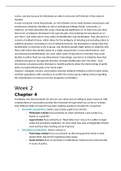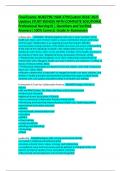Summary
Boek Samenvatting - deel vd tentamenstof (Hoofdstuk 4 & 6) Solidarity and Social Justice in Contemporary Societies, ISBN: 9783030937959 Solidarity and Social justice ()
- Course
- Institution
- Book
Boek Samenvatting - deel vd tentamenstof (Hoofdstuk 4 & 6) Solidarity and Social Justice in Contemporary Societies, ISBN: 9783030937959 Solidarity and Social justice () De totale tentamenstof wat betreft het boek was in studiejaar hoofdstuk 1, 2, 3, 4 & 6. Maar deze samenvatting omvat dus al...
[Show more]












